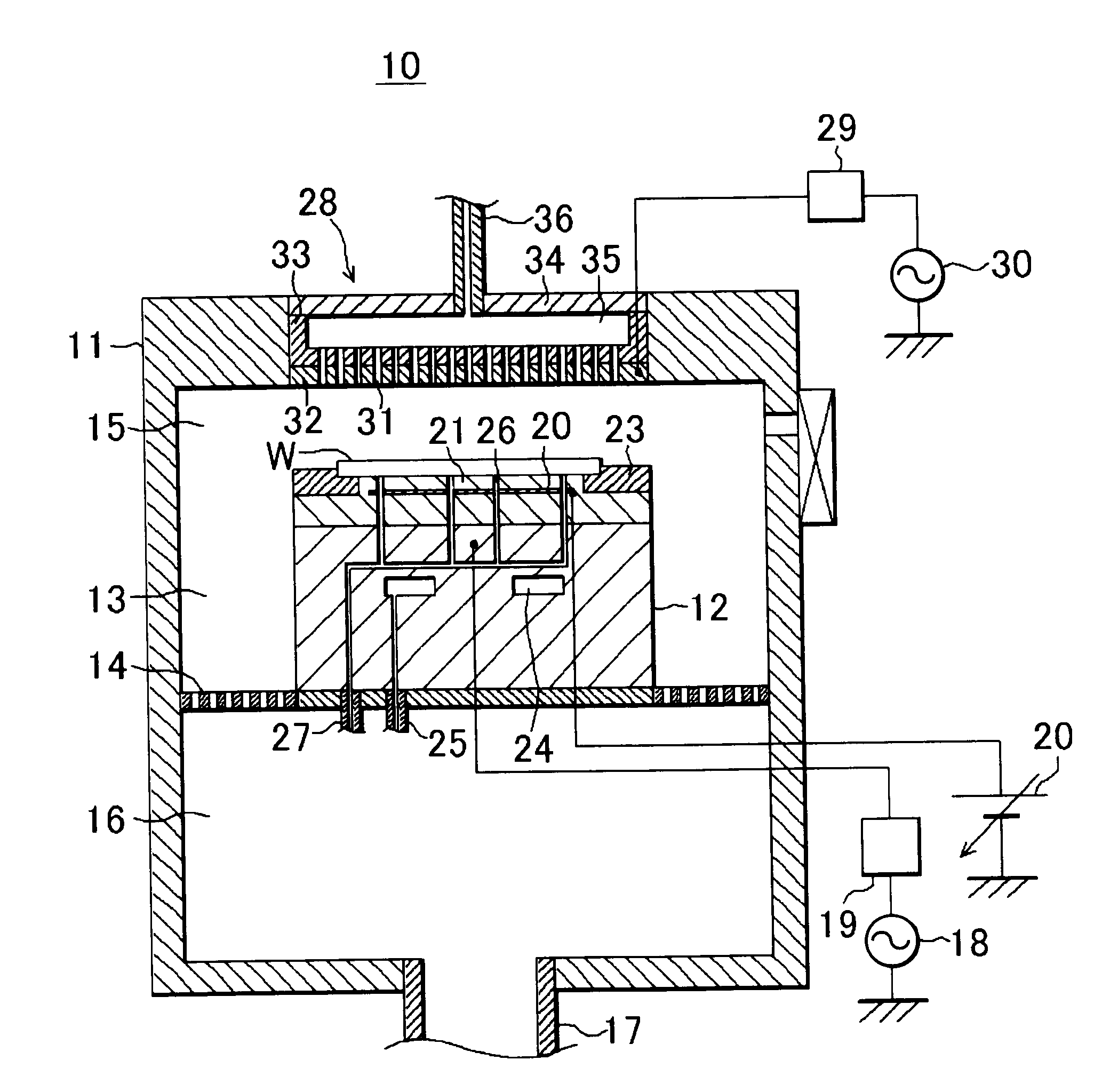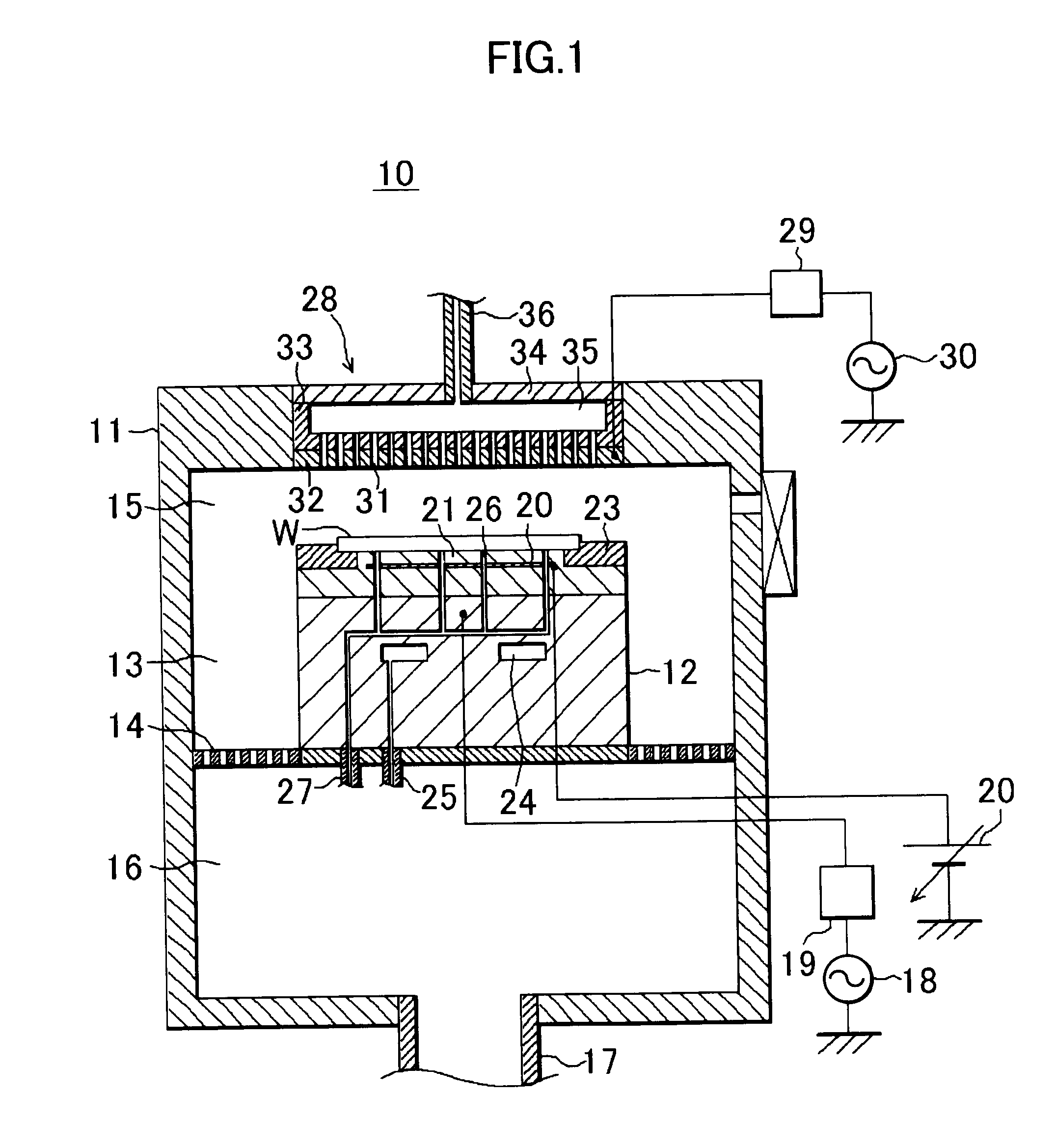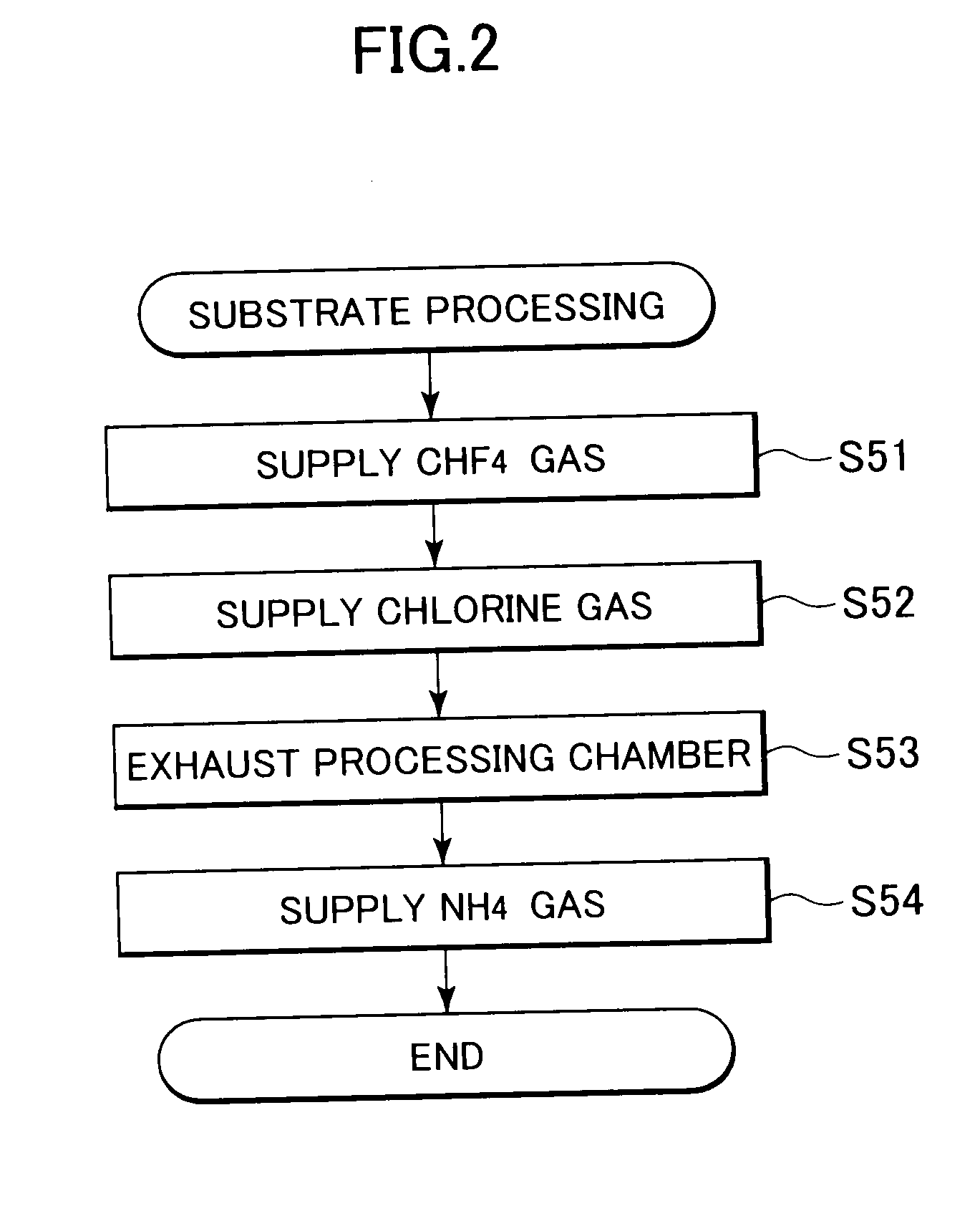Substrate processing method
- Summary
- Abstract
- Description
- Claims
- Application Information
AI Technical Summary
Benefits of technology
Problems solved by technology
Method used
Image
Examples
example 1
[0053]First, in the substrate processing apparatus 10, a process gas containing carbon tetrafluoride gas was supplied into the reaction chamber 15 in which a wafer W was accommodated. After that, the pressure in the reaction chamber 15 was reduced to a vacuum state, and radio frequency electrical power was supplied, whereby the process gas was turned into plasma. A polysilicon layer on the wafer W was subjected to the plasma etching using the plasma. Next, the pressure in the reaction chamber 15 was increased to atmospheric pressure, and a sufficient amount of chlorine gas was supplied into the reaction chamber 15. After that, the gas in the reaction chamber 15 is exhausted via the exhaust pipe 17. Subsequently, ammonia gas was supplied into the reaction chamber 15, and the wafer W was cleaned using the ammonia gas and then taken out from the chamber 11. Then, the surface of the wafer W was observed using a microscope, and it was ascertained that there was no foreign matter on the s...
example 2
[0057]First, at atmospheric pressure, a single gas comprised of hydrogen fluoride gas was supplied to a wafer W that had been subjected to the plasma etching. Then, the wafer W was heated to a temperature of 200° C., and a mixed gas comprised of hydrogen fluoride gas and nitrogen gas was supplied to the wafer W. Next, chlorine gas was supplied toward the wafer W, and then ammonia gas was supplied toward the wafer W. Then, the surface of the wafer W was observed using a microscope, and it was ascertained that there was no foreign matter on the surface of the wafer W.
PUM
 Login to View More
Login to View More Abstract
Description
Claims
Application Information
 Login to View More
Login to View More - R&D
- Intellectual Property
- Life Sciences
- Materials
- Tech Scout
- Unparalleled Data Quality
- Higher Quality Content
- 60% Fewer Hallucinations
Browse by: Latest US Patents, China's latest patents, Technical Efficacy Thesaurus, Application Domain, Technology Topic, Popular Technical Reports.
© 2025 PatSnap. All rights reserved.Legal|Privacy policy|Modern Slavery Act Transparency Statement|Sitemap|About US| Contact US: help@patsnap.com



